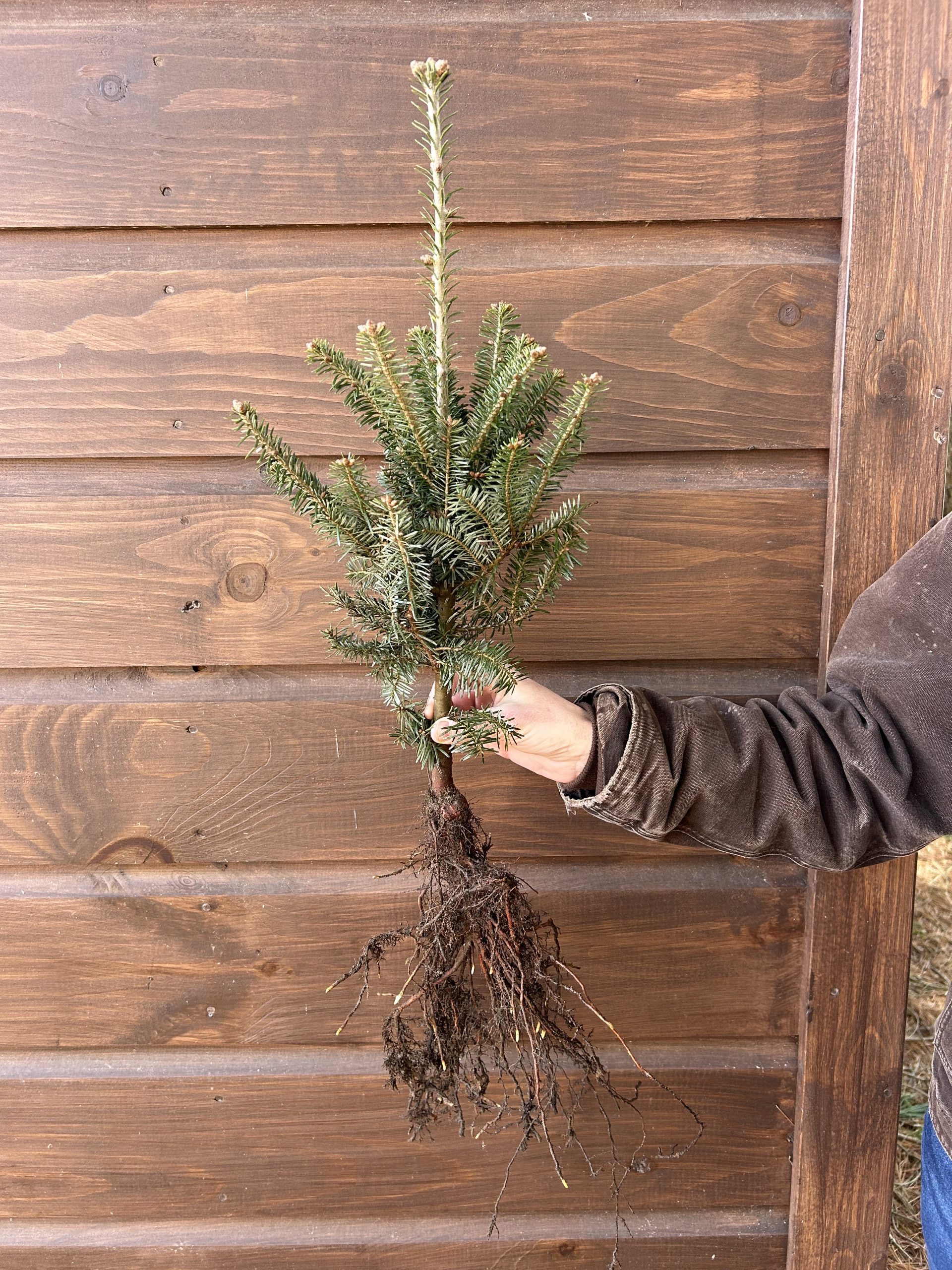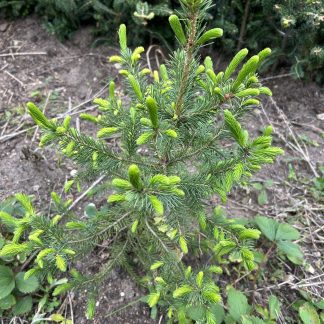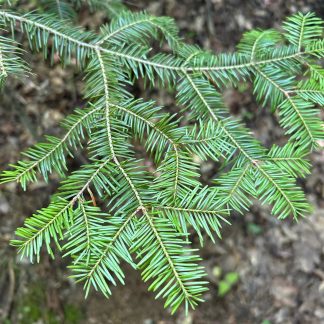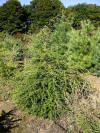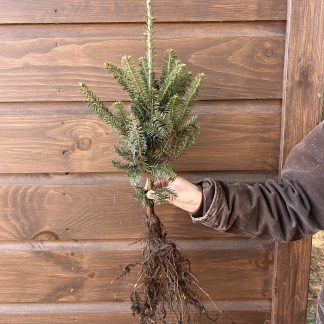Description
Canaan fir are one of the most popular Christmas trees. They grow best on fertile, moist, well drained soils. Once they are established, they can thrive in a sandy area too. Unlike Fraser fir trees, they can handle wet soil. Canaan fir are an open, pyramidal tree, with stiff, horizontal branches, ending in stout, yellowish-brown, fuzzy twigs, with crowded shiny foliage. Their needles are a lustrous dark green from above, silvery on the underside, aromatic, narrow and straight. They grow 1/2″ to 1″ long with a notched tip. On young Canaan fir they are scattered, spirally arranged in rows and cover all sides of the branch, as the tree ages they just grow on the upper side of the branch. Buds on the tree are small resinous and brown in the winter. They are late to break bud in the spring, so this makes them perfect for areas with a high risk of spring frost damage. The bark on the Canaan fir is rough and a cinnamon-red when the tree is older. Young trees have a smooth, gray, resinous bark. The main pests that affect the Cannan fir are the balsam wooly adelgid and spruce budworm. They can be controlled with spraying.
